There were a couple of new ski mountaineering and ski touring boots that caught my eye at the recent Outdoor Retailer show in Salt Lake City. In this post, I would like to introduce you to a light and very good looking boot from an Austrian company with rich history in winter sports.
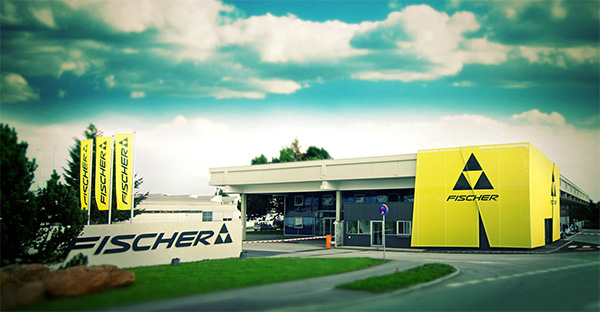
Fischer, founded in 1924 and family owned, is a traditional alpine skiing and cross-country skiing manufacturer with many wins on the World Cup circuits in both sports. Recently, the company is making more and more inroads into ski mountaineering and skimo racing with some well-designed and innovative products.
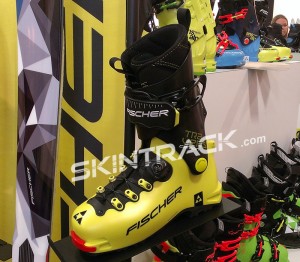 With the Travers Carbon boot, Fischer has done a fantastic job at delivering a very light, simple and functional boot. I am saying this without actually skiing the boots because it seems like they took the most effective solutions from other boots and combined them into one.
With the Travers Carbon boot, Fischer has done a fantastic job at delivering a very light, simple and functional boot. I am saying this without actually skiing the boots because it seems like they took the most effective solutions from other boots and combined them into one.
At the claimed 990 grams for size 26.5MP, the Travers Carbon will be challenging for the lightest ski mountaineering boot on the market apart from the obvious skimo racing models.
Cuff rotation, also known as ankle articulation, appears as good as on my Dynafit TLT6 and feels quite frictionless just as we have become used to with racing and light touring boots.
The choice and design of closing mechanisms is minimalistic and simple. Cuff locks into ski position with a lever that is located on its backside, just like on most skimo racing boots. The shin/calf closing buckle uses a tall velcro-style power strap, with the buckle being hollow, making it very light.
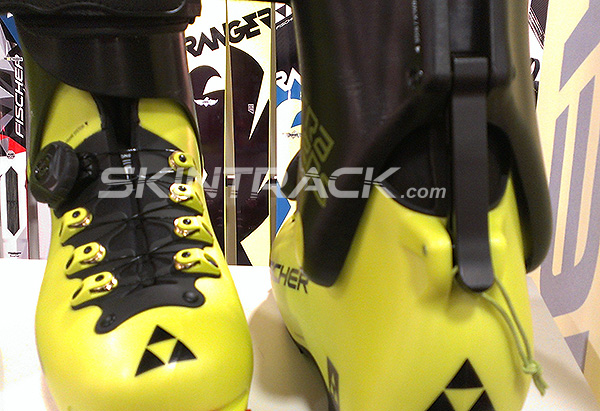
Cuff forward lean in ski mode looks fairly neutral (not up right though) which is usually desirable for long days in the mountains. Steep and aggressive forward leaning boots can be tiring for your quads during long or multiple descents, although, it is an individual preference.
The boot’s cuff and shell are made out of Grilamid, very hard and abrasion resistant “plastic”, that is now more commonly used by other manufacturers as well. Bottom part of the shell is also reinforced with carbon fiber sole to create a no-torsion base with the goal of maximum power transfer.
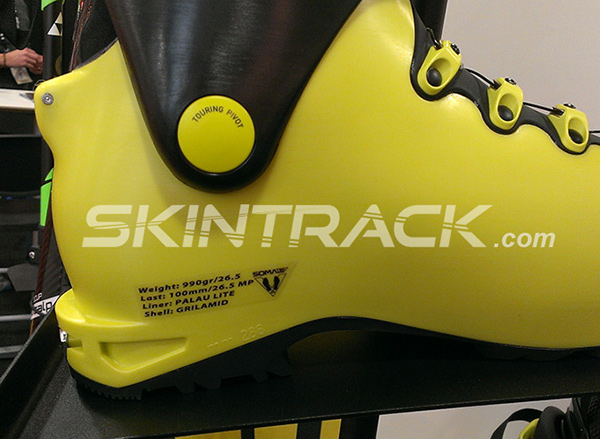
Width in the forefoot, or last, is 100 mm.
Overall, the Travers boot looks and feels well manufactured and finished. With Fischer now fully in the game, I believe this will benefit all ski mountaineering enthusiasts as the pressure for better gear will keep piling on.
Stay tuned as in the next post we will take a closer look at the new Arc’Teryx Procline Carbon ski alpinism boots.
Boots
New Skimo Gear for 2015-2016 Season
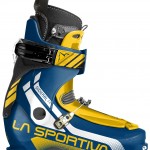
The biggest change of the season is in skimo racing bindings. Weight continues to be shaved off despite new ISMF regulations that require race bindings to have manual locking mechanisms (pulling up on the toe piece to lock in). All the major brands now have a competitive (light weight) binding with a manual lock.
La Sportiva
No major changes to the La Sportiva ski line but the citizen race/ski touring boot – the Sideral – has been update to the 2.0 version. It features improved buckles (borrowed from the Spectre model) and an updated sole that offers compatibility with Tech, Frame and Trab TR2 binding systems.
- Here is Sideral 2.0 on Skimo.co
- And at Cripple Creek BC
Dynafit
Dynafit continues to improve its ski running line with the retail release of the 2.0 version of the DNA Race ski, boot, and Low Tech Race binding.
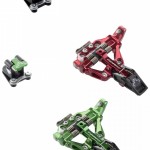
DNA Boot (PG RC-1 2.0) – Last year, Dynafit stepped away from their DyNA race boot and began licensing the Pierre Gignoux Morpho 400 as their RC-1 race boot. The 2015/16 DNA Boot is an improved RC-1 with a new color scheme (green and pink to match the skis) as well as an improved sole (way better than the RC-1!), and a new upper cuff strap system. Probably, it will be pretty difficult to find much stock in the US but if you find yourself in Europe it’s much more common over there.
Low Tech Race 2.0 Binding – With ISMF regulations requiring a race binding toe that does not auto lock, the Low Tech Race has taken an TLT Superlight toe piece with locking lever and trimmed it down to the essential material, pairing it with a Gignoux plastic heel piece to create a lightweight (around 100g) binding with a removable crampon attachment.
- DNA skis on Skimo.co
- DNA boots (previously RC-1) at Dynafit.com
- Low Tech 2.0 bindings on Skimo.co
- Dynafit PDG 2.0 skis on Cripple Creek BC
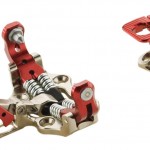
Plum
Race 99 Binding – This is an exciting entry into the game from Plum as the lightest all-metal binding on the market at a scant 99 grams. Mount these on any of the lighter skis and you might find yourself needing to add weight to meet the ISMF minimums! We got a chance to check them out at the 2015 Pierra Menta in March and at the Plum factory in Annecy, they are pretty cool!
- Race 99 on Skimo.co
- At Cripple Creek BC
Fischer
While racing the World Cup last season, Eric took mental note of all the broken skis that he saw throughout the year, and there were lots! The yellow Fischers topped the list but it looks like they have worked out the issues this year with their new Alp Attack Carbon skis. It has the same design as the (older) yellow version with a new construction and top sheet.
Race binding – Fisher is moving away from ATK as their bindings manufacturer and adopted the Dynafit Low Tech as its own re-branded binding for this season. Using the same toe as the Low Tech described above, it is slightly heavier with the older version Low Tech heel (metal rather than the current plastic Gignoux heel). This unit is likely much more durable for day-to-day use.
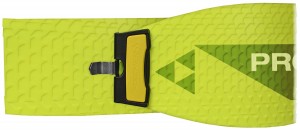
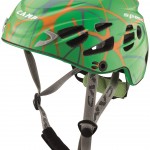
CAMP
Speed 2.0 Helmet – CAMP is responsible for some excellent skimo accessories including their Rapid Racing Pack and their Race 290 crampons, and have now improved their venerable Speed helmet to be slightly lighter and with a new retention system. The Speed 2.0 helmet is comfortable for racing and does not to conflict much with sunglasses or a light light hat.
- CAMP Speed on Skimo.co
Ski Trab
Gara Titan binding – Ski Trab’s new binding comes in at just over 100g (slightly less than Dynafit Low Tech 2.0) and has all the required features plus a new design that allows the tech toe to close without coiled springs on the wings. Being completely new on the market, it may require some testing of the concept but it’s a possible worthy alternative binding.
- Gara Titan on Skimo.co
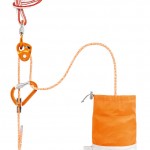
Petzl
Rad Line – This is a special 30 meter, 6mm diameter ‘hyperstatic’ cord that can be used for rappelling and for glacier travel. The cord is pre-packaged by Petzl with three lightweight screw-lock carabiners, a double-shoulder length sling (can be used as an anchor or improvised harness), a micro traction (rope capture pulley (for a crevasse rescue), and a Tibloc (for rope ascent), all in a fancy Petzl bag.
The Rad Line is basically a ready-to-go ski mountaineering kit. Perfect for glaciers in the North Cascades, or Chamonix, or dropping into gnarly lines in the Tetons. Pair it with a thicker 30m lead line for harder terrain or use a skinny pull rope for 30m rappels.
- Petzl Rad Line at Petzl.com
For now, that’s all we have for new 2015-2016 skimo gear. We will have some more in-depth reviews of all of the above products soon! If we’ve missed anything, please give us a shout in the comments below or via our contact form.

